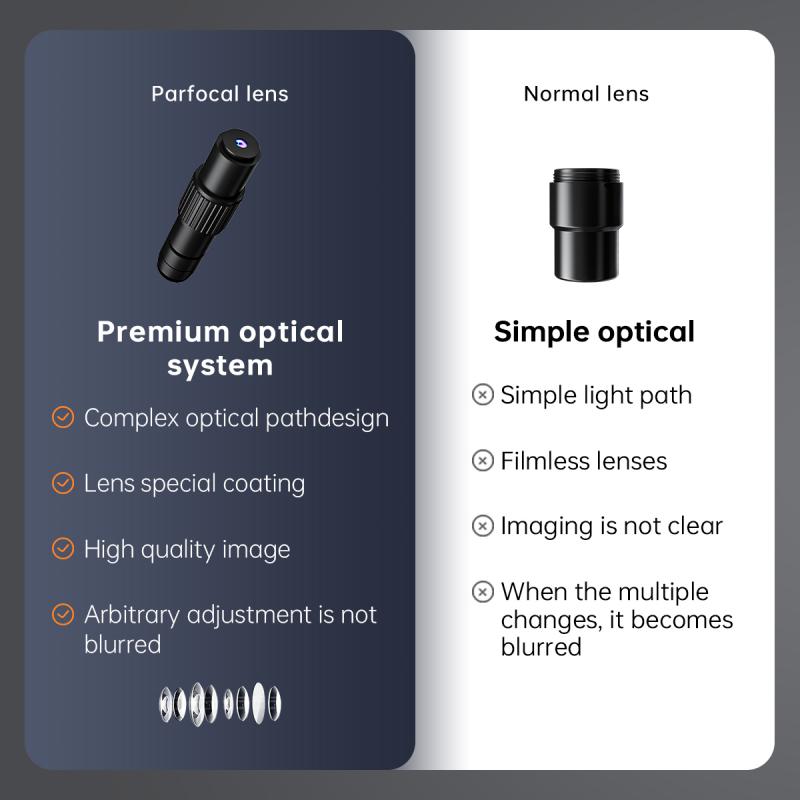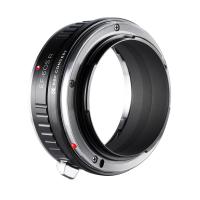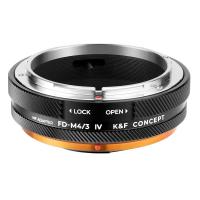How Does A Electron Microscope Work ?
An electron microscope works by using a beam of electrons instead of light to magnify the image of a sample. The electrons are accelerated through a vacuum and focused onto the sample using electromagnetic lenses. As the electrons interact with the sample, they scatter and produce signals that are detected and used to create an image. The image is then displayed on a screen or captured digitally. The high energy of the electrons allows for much higher magnification and resolution compared to a traditional light microscope, enabling scientists to study the fine details of a sample at the atomic level.
1、 Electron beam generation and control
An electron microscope is a powerful tool used to observe objects at a very high resolution. It works by using a beam of electrons instead of light to create an image. The electron beam is generated and controlled through a series of steps.
First, electrons are generated by a heated filament or a field emission source. The filament emits electrons when heated, while a field emission source uses a high electric field to extract electrons from a sharp tip. These electrons are then accelerated using an electric field towards the sample.
Next, the electron beam is focused using electromagnetic lenses. These lenses use magnetic fields to bend and focus the electron beam onto the sample. The lenses can be adjusted to control the size and shape of the beam, allowing for precise imaging.
Once the electron beam reaches the sample, it interacts with the atoms in the material. This interaction produces various signals, such as secondary electrons, backscattered electrons, and characteristic X-rays. These signals are then detected and converted into an image using detectors.
In recent years, advancements in electron microscopy have led to the development of new techniques. For example, aberration-corrected electron microscopy has improved the resolution and clarity of images by correcting for lens aberrations. Additionally, scanning transmission electron microscopy (STEM) allows for the simultaneous imaging and analysis of samples at atomic resolution.
Overall, the electron microscope works by generating and controlling an electron beam, which is then focused onto the sample and produces signals that are detected and converted into an image. Ongoing advancements in electron microscopy continue to push the boundaries of imaging capabilities, enabling scientists to explore the nanoscale world with unprecedented detail.

2、 Specimen preparation and mounting
Specimen preparation and mounting is an essential step in the operation of an electron microscope. Electron microscopes use a beam of electrons instead of light to magnify and visualize specimens at a much higher resolution than traditional light microscopes. However, the nature of electron microscopy requires careful preparation of the specimen to ensure accurate and clear imaging.
The first step in specimen preparation is fixing the sample. This involves preserving the specimen's structure and preventing any changes or degradation that may occur during the imaging process. Fixation methods can vary depending on the type of specimen, but commonly involve chemical fixation using aldehydes or cryofixation using rapid freezing techniques.
After fixation, the specimen is dehydrated to remove any water content. This is typically done using a series of alcohol or acetone washes, gradually replacing the water with an organic solvent. Dehydration is necessary because the electron beam cannot pass through water molecules, which would scatter the electrons and degrade the image quality.
Once dehydrated, the specimen is then embedded in a resin or plastic material to provide support and stability. This is usually done by infiltrating the specimen with a liquid resin, which is then polymerized to form a solid block. The block is then trimmed and sectioned into ultra-thin slices using an ultramicrotome.
The final step in specimen preparation is mounting the ultra-thin sections onto a suitable substrate. Common substrates include copper grids coated with a thin layer of carbon or a thin film of plastic. The sections are carefully transferred onto the grid and may be stained with heavy metals to enhance contrast.
It is worth mentioning that recent advancements in electron microscopy techniques have allowed for the imaging of specimens in their native, hydrated state. Cryo-electron microscopy (cryo-EM) has emerged as a powerful technique that enables the imaging of biological samples without the need for fixation, dehydration, or embedding. Cryo-EM involves rapidly freezing the specimen to preserve its natural state and imaging it at extremely low temperatures. This technique has revolutionized the field of structural biology, allowing researchers to visualize complex biological structures in unprecedented detail.
In conclusion, specimen preparation and mounting are crucial steps in the operation of an electron microscope. Proper fixation, dehydration, embedding, and mounting techniques ensure that the specimen is preserved and prepared for high-resolution imaging. Additionally, advancements such as cryo-EM have expanded the capabilities of electron microscopy, enabling the imaging of specimens in their native state.

3、 Electron-sample interaction and signal generation
An electron microscope works by utilizing the interaction between electrons and the sample being observed to generate a signal that can be used to create an image. This interaction occurs through a process called electron-sample interaction.
In a typical electron microscope, a beam of electrons is generated and accelerated towards the sample. As the electrons pass through or interact with the sample, various interactions take place, leading to the generation of signals. These signals are then collected and processed to create an image of the sample.
There are several types of electron-sample interactions that can occur, including elastic scattering, inelastic scattering, and secondary electron emission. Elastic scattering refers to the deflection of electrons due to interactions with the atomic structure of the sample. Inelastic scattering involves the transfer of energy between the electrons and the sample, resulting in the emission of characteristic signals such as X-rays. Secondary electron emission occurs when the primary electron beam causes the ejection of secondary electrons from the sample surface.
The signals generated during these interactions are collected using detectors and converted into electrical signals. These signals are then amplified and processed to create an image of the sample. The resolution of an electron microscope is determined by factors such as the wavelength of the electrons and the quality of the detectors used.
In recent years, advancements in electron microscopy have led to the development of techniques such as scanning transmission electron microscopy (STEM) and electron energy-loss spectroscopy (EELS). STEM allows for the simultaneous imaging and analysis of samples, while EELS provides information about the chemical composition and electronic structure of materials.
Overall, electron microscopes have revolutionized our ability to observe and analyze the nanoscale world, providing valuable insights into the structure and properties of various materials.

4、 Signal detection and amplification
An electron microscope works by utilizing the principles of signal detection and amplification to produce highly detailed images of objects at a microscopic level. Unlike a traditional light microscope, which uses visible light to illuminate the sample, an electron microscope uses a beam of electrons.
The process begins with the generation of a beam of electrons using an electron gun. This gun emits electrons from a heated filament and accelerates them using an electric field. The accelerated electrons then pass through a series of electromagnetic lenses, which focus and shape the beam.
Once the beam is properly focused, it is directed towards the sample. As the electrons interact with the sample, they undergo various interactions, such as scattering and absorption. These interactions provide valuable information about the sample's structure and composition.
To detect the signal produced by the interactions, a detector is placed in the path of the electrons. The most common type of detector used in electron microscopy is a scintillator, which converts the electron signal into visible light. This light is then detected by a photomultiplier tube or a charge-coupled device (CCD) camera.
The detected signal is then amplified to enhance its strength and clarity. This amplification process allows for the visualization of fine details and increases the overall resolution of the image. The amplified signal is then processed and displayed on a screen or captured digitally for further analysis.
In recent years, advancements in electron microscopy have led to the development of new techniques and technologies. For example, aberration-corrected electron microscopy has significantly improved the resolution and image quality by minimizing the effects of lens aberrations. Additionally, the integration of electron microscopy with other imaging techniques, such as scanning probe microscopy and spectroscopy, has enabled researchers to obtain more comprehensive information about the sample's properties.
Overall, the working principle of an electron microscope relies on signal detection and amplification to produce high-resolution images of microscopic objects. Ongoing advancements continue to push the boundaries of electron microscopy, allowing for even greater insights into the nanoscale world.





































